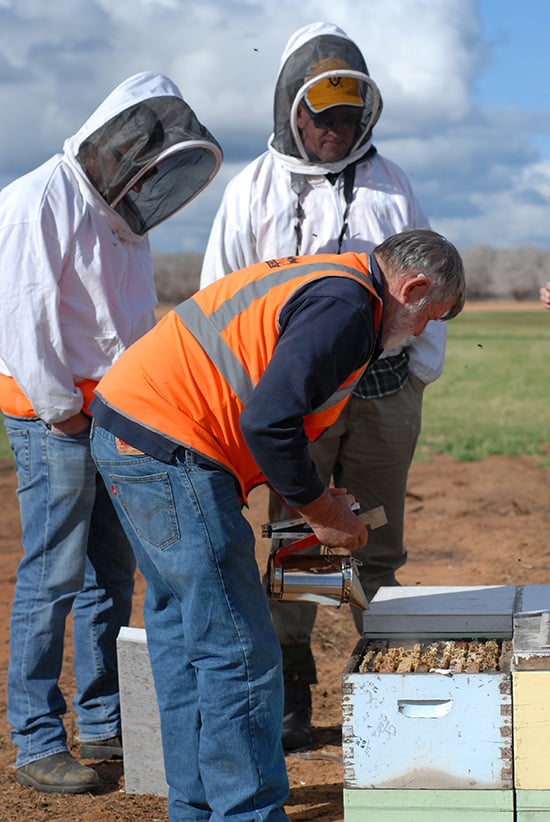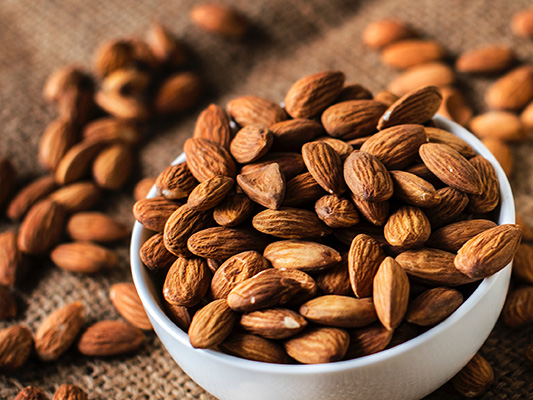Every year in August over 200,000 bee colonies are taken to New South Wales, Victoria and South Australia to pollinate more than 30,000 hectares (Almond Board of Australia 2017-18 Almond Insights) of almond trees.
Honey bee pollen foragers perform most pollination of almonds. To increase the number of pollen foragers brood production must be stimulated. Preparing honey bee colonies for almond pollination therefore requires management to increase colony populations in autumn and late winter, a time when conditions are often poor.
Preparation of colonies for almond pollination

Trevor Monson and his team inspecting hives for almond pollination
Colonies should have a minimum of six frames of bees, with eight or more being highly desirable. Fresh nectar stimulates colony growth and, along with fresh pollen, is the best resource to build your colonies. If no nectar or pollen is available to foraging bees then colonies can be stimulated with supplementary feeding.
Almonds produce little to no nectar at the beginning of flowering. Each colony may consume up to 10kg of stored honey in the early stages of flowering. Colonies should have at least two frames of honey and have room to expand.
Bringing so many honey bee colonies together risks the spread of disease. Having strong, healthy colonies, implementing a barrier system and following the Bee Biosecurity Code of Practice will reduce the risks. Colonies with American foulbrood are not permitted for almond pollination. Ensure your registration is up to date and you follow interstate hive transport regulations of the state governments you will travel through.
On farm management
Keep colonies in warm sheltered positions as orchard layout allows. If colonies get too cold they may stop brood production, which reduces their need for pollen. Honey bees can only forage at temperatures above 12oC.
Application of pesticides and fungicides will negatively impact bees. Ensure that growers follow best practice and time chemical application to minimise risks to your hives. Applying fungicides late in the day or early evening will reduce the risk that bees will be negatively impacted as most foraging by bees is done in the beginning of the day.
Video
In this video, Trevor Monson of Monson’s Honey and Pollination discusses almond pollination.
Acknowledgements for article
- Almond pollination factsheet from AgriFutures
- Almond pollination from BeeAware
- AgGuide: Pollination using honey bees
- J. Rhodes (2006) Apiary management for winter/early spring pollination. Primefact 158, NSW Department of Primary Industries


